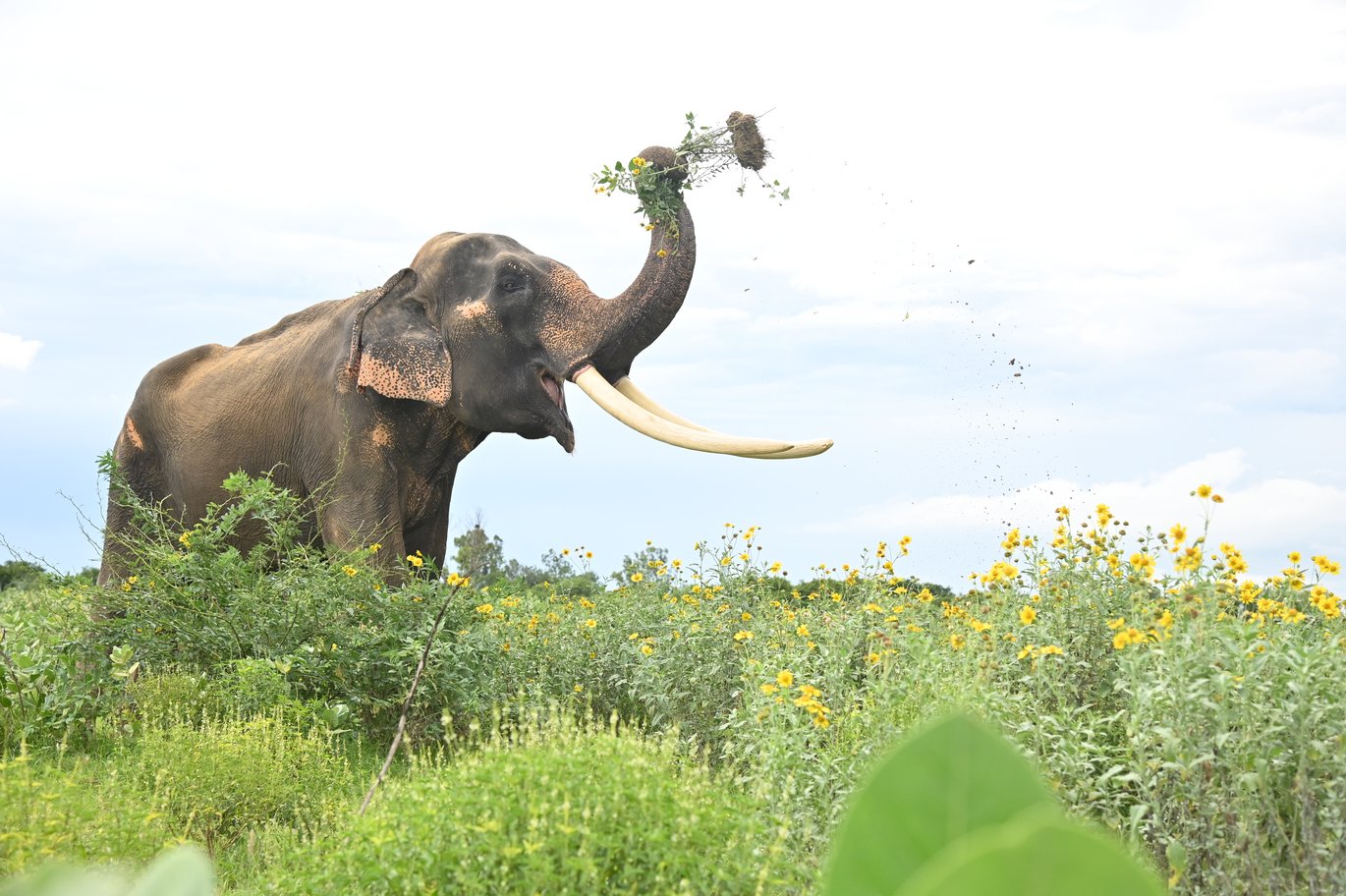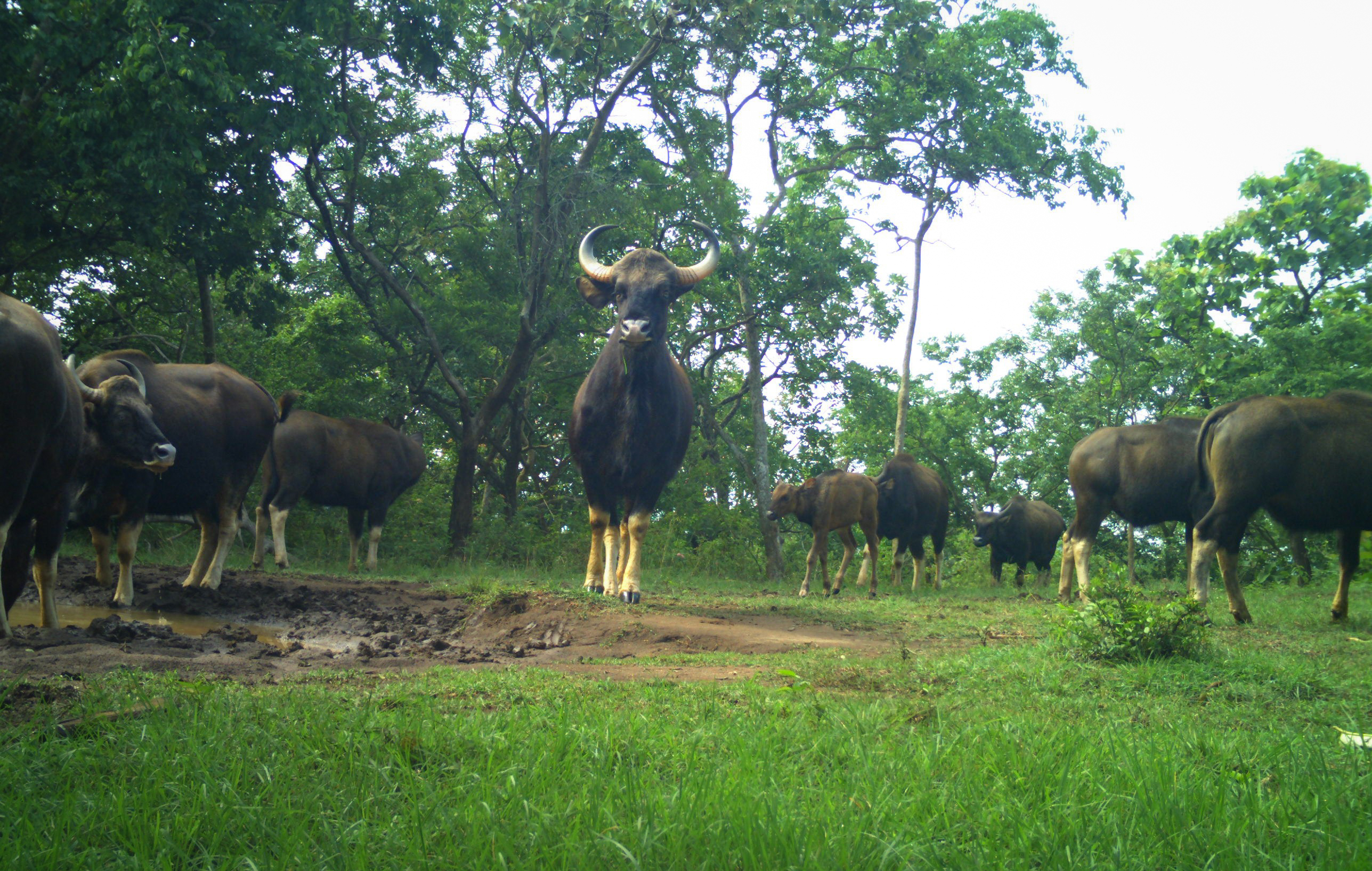Large herbivores keep invasive plants at bay
Elephants, buffaloes and other heavy herbivores are effective against invasive plants. This is the conclusion of a new study from Aarhus University and the Wildlife Institute of India that used Indian data, including data from the world's largest survey of wildlife based on camera traps. But smaller animals can do the same: you don’t need elephants to get the same effect, the researchers point out.



Large herbivores can protect local nature by eating and trampling on biodiversity-threatening invasive plant species.
Where is the logic in that, you might object, because wouldn’t the large animals also eat and trample native plants?
But this is not the case. Native plants have evolved such that they can withstand brutal treatment from species of herbivores they have co-existed with for millennia, while invasive plants usually cannot.
A natural weapon
This is the conclusion of a new study from Aarhus University and the Wildlife Institute of India, which has just been published in the scientific journal, Nature Ecology & Evolution. The study shows great potential for using large herbivores as a natural weapon to prevent invasive plants from out-competing native species.
At least it works in India, where the researchers gathered their data. More specifically from the world's largest wildlife survey using camera traps, which takes place every four years, as well as India’s extensive monitoring programme for plants. (Read about the monitoring in the fact box.)
However, the researchers point out that the results are also relevant for areas that do not have herbivores quite as large as those in India. More about this later.
Facts:
It is no exaggeration to call the Indian survey the world's largest. With 26,838 camera traps, it has earned a place as a Guinness World Records, and it even involves field work, with tens of thousands of participants on foot covering a forest area totalling 381,200 km2.
The survey is carried out every four years. The main purpose is to find out how the country's tiger populations are faring, but the motion sensors in the cameras detect much more than the striped predators. Thousands of elephants, rhinos, wild water buffaloes and Indian bison (the world's largest species of wild cattle) have also appeared in the almost 35 million photos. The enormous volumes of data also include large amounts of vegetation and dung samples.
Mega-herbivores
The study is based on what the researchers call mega-herbivores, i.e. animals weighing more than one tonne. In India, these are elephants, rhinos, wild water buffalo and Indian bison (the largest and heaviest bovine in the world).
The study demonstrates a positive correlation between the number of mega-herbivores and the balance between native and invasive plant species: Where there are many mega-herbivores, there are also many native plants and fewer invasive plants.
And vice versa. In places where invasive species predominate, there are few or no mega-herbivores.
Except in some areas in India where invasive plant growth has become so tall and dense that mega-herbivores cannot get to it.
Why is this important?
Because the UN has designated invasive species as one of the five most important threats to global biodiversity.
Invasive species are animals, plants and fungi that are introduced to areas to which they could not spread themselves, and that also harm native biodiversity.
These biological invasions also impose enormous costs on society, and more than USD 120 billion has been spent world-wide over the last 50 years on combating and controlling them. Without any great success.
Why mega-herbivores exactly?
Because their large size means that they have to eat a lot. And they are used to eating many different plant species, even species with less nutritional value, because they simple cannot afford to be picky. Therefore, they are more likely to include unfamiliar plants in their diet.
The research team could have included smaller species of herbivores in the study, but their roles in local ecosystems are more complex; they are also on the menu for tigers and leopards. Elephants etc. are not.
Big is good, but not decisive
And so we return to how we can apply the study in countries without elephants, rhinos, etc.
You don't need mega-herbivores to keep invasive plant species at bay – slightly less large and medium-sized species can have similar effects.
"Although some of the cattle released in rewilding projects in Europe can grow to more than a tonne, animals weighing less than a tonne can have similar effects. In Hungary, it’s been shown that water buffalo drive away the invasive giant goldenrod; a species that is also a problem in Denmark. Scottish Highland cattle are also used in Denmark to keep down rosehip bushes; an Asian species that is often considered problematic in Danish nature," says Professor Jens-Christian Svenning from Aarhus University.
Go ahead and copy in Europe
The study's lead author, Ninad Avinash Mungi, is a postdoc at Aarhus University, and he stresses that the size of grazing animals is not decisive in the fight against invasive species.
"You can easily use a mixture of large, medium and small herbivores. Deer, buffalo, cattle and horses work well together in rewilding projects, and together they can also target different invasive plant species. This also makes efforts more flexible and resilient," he says, and continues:
"It’d be a really good idea to carry out a large-scale European biodiversity survey like the one in India, which holds the Guinness World Record. Europe has more money to invest in nature and nature restoration."
Additional information | |
| We strive to ensure that all our articles live up to the Danish universities' principles for good research communication(scroll down to find the English version on the web-site). Because of this the article will be supplemented with the following information: | |
| Funding | VILLUM FONDEN, Danish National Research Foundation, Independent Research Fund Denmark, National Tiger Conservation Authority, New Delhi, India |
| Collaborators | National Tiger Conservation Authority, India, Wildlife Institute of India, Indian State Forest Departments |
| Read more | The scientific article Megaherbivores provide biotic resistance against alien plant dominance in Nature Ecology & Evolution. Behind a paywall. |
| Contact | Jens-Christian Svenning, professor, head of Center for Ecological Dynamics in a Novel Biosphere (ECONOVO) and Center for Biodiversity Dynamics in a Changing World (BIOCHANGE) at the Department of Biology, Aarhus University Ninad Avinash Mungi, postdoc, Center for Biodiversity Dynamics in a Changing World (BIOCHANGE) at the Department of Biology, Aarhus University |
